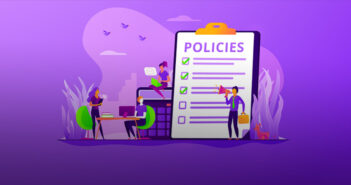The central conversation around the smart buildings of the future should all revolve around one common theme: how it improves the user experience. While there is no denying that technology is an integral component of this imminent vision, it is not central to it – people are. Creating commercial technology that is complementary to the way we live our lives is key to developing the smart building of the future.
The lines between working, shopping, exercising, and home are blending as all of our daily activities become available to us from anywhere, as long as we have an IoT enabled smart-device in our pocket (which 90% of Americans currently own.) In fact, by 2020, half of the U.S. workforce will be comprised of millennials and Generation Z, and 71 percent of time spent online in the U.S. happens on mobile devices. Enterprise solutions need to support this shift by providing technology that bolsters this new culture through easy-to-use processes that increase the flexibility and convenience, ergo, the quality of our lives. The most compelling story for enterprise solutions starts here — in finding a way to create a service or product that evolves with how we choose to operate from day to day, regardless of how fluid or unstructured it might be, one size does not fit all anymore. Central to creating these offerings are making it relatable and usable to everybody.
For example, Openpath Access Control utilizes end-to-end encrypted mobile and cloud technology to enable users and operators to easily move across different building locations, control the system remotely, integrate with other systems, and grant temporary guest passes with only their smartphone. This allows users to seamlessly move through their day, without the hassle or headaches that come with entering a building and with the peace of mind that their safety will not be compromised. Openpath aims to “kill the keycard” by reimagining every aspect of access control — a legacy solution that has not been revisited in decades. Openpath lets anyone simply walk up to the door and have it unlock automatically with no direct action needed from the user. And by introducing our patented “triple unlock” technology — simultaneous WiFi, Bluetooth and LTE authentication via a user’s smartphone, we are offering the fastest, most reliable mobile solution on the market. Our focus on UX produced an access control solution that eliminates burdensome steps from our daily routines and makes our interactions not just more convenient, but also more enjoyable.
In addition, we understand that most enterprise tech solutions are valued for their ability to increase speed and efficiency, but also believe that enterprise tech must improve the way people collaborate with each other to truly impact the future. To create smarter interactions, buildings must rely on technology that is open, mobile-focused and forges connections at its core.
In the example of a modern workplace, an Openpath user would be able to enter their parking garage, walk through a turnstile, unlock the floor on the elevator, and securely enter the front door all with their smartphone as a key that never even had to be taken out of their pocket or bag. Perhaps they are the first to enter the office, which triggers the thermostat to kick on to a preferred temperature and also start the coffee machine. During the workday, should a visitor be coming by, remotely unlock the door when they arrive by typing the command into slack. Whether its communication, maximizing usage of interior spaces, or efficiently using utilities, there are boundless options available when they are all able to interact with the central physical access platform, something we also refer to as the “platform of record”.
An often overlooked component of the office experience is access. Companies typically use access control systems in the form of a key card to ensure that employees can safely enter their place of work. However, with nearly a quarter of Americans losing their keys twice a week, causing them to be late to work and resulting in companies losing $3 billion annually, these key card systems are working against productivity. Not to mention they don’t even begin to meet the security or tech expectations of a changing workforce.
In the past, the general assumption has been that in order to offer flexibility, one must sacrifice safety. Openpath has challenged that line of thinking by designing an ecosystem with best in class security at every turn. In addition to our end-to-end encrypted platform, we’ve also introduced features to combat the unfortunate circumstances in today’s society such as tailgating and senseless acts of physical violence. Our tailgating and lockdown features are able to integrate with video surveillance platforms to immediately detect and take appropriate action when an unsolicited access event or visitor presents itself. With Lockdown, the unique ability to immediately send live camera feed to local first responders, giving them heightened situational awareness, is paramount during times when every second counts.
While there will always be some uncertainty about what the future will be, it is clear that the value people offer in the workplace and in society should not need to be diminished by the advent of new technology. Rather, this tech can be harnessed into the creation of smart practices to enhance daily activities and create a better experience for all of us. Technology needs to go beyond increasing efficiency and productivity, creating a truly delightful experience that doesn’t isolate the population, but rather brings people together by allowing them to create experiences best suited to their needs. That is the creation of a Smart Building.



